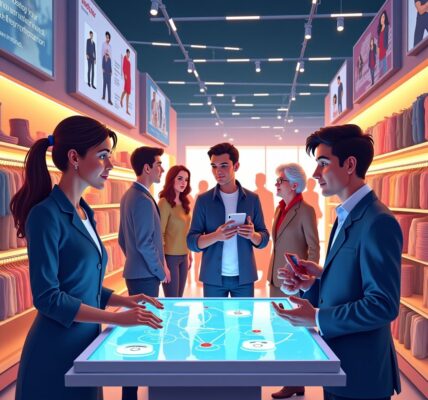Ulta Beauty is redefining the way customers approach hairstyling with its innovative integration of the Glamlab Hair Try-On application. This AI-powered tool allows users to experiment with various hairstyles and colors in a virtual environment before making permanent changes. This initiative not only enhances customer engagement but also significantly boosts conversion rates, as evidenced by recent findings.
The Glamlab Hair Try-On application provides a unique digital experience for shoppers. It allows them to take a photo, upload a headshot, or use a model’s image to explore an array of hair color and style possibilities. According to a blog post by Nvidia, the technology that powers this app is based on the Nvidia StyleGAN2 generative AI model. This advanced tool generates infinite images using a sophisticated neural network architecture known for its transfer learning capabilities.
Juan Cardelino, director of the computer vision and digital innovation department at Ulta Beauty, emphasizes the necessity of this virtual try-on capability. He stated, “Shoppers need to try out hair and makeup styles before they purchase.” This sentiment reflects Ulta Beauty’s long-standing commitment to providing try-on services, whether in physical stores or digital platforms. The company’s history in integrating makeup testers showcases their understanding of consumer preferences and the importance of experiential shopping.
The Glamlab Hair Try-On technology is more than just a gimmick; its impact on sales is substantial. Data suggests that shoppers who utilize this tool are more likely to make a purchase compared to those who do not. With over 1,400 stores across the U.S., Ulta Beauty has harnessed the power of AI not only to enhance customer service but also to drive tangible business results.
To ensure that the technology meets high-quality standards, the Ulta Beauty team undertook significant steps in its development process. They licensed the StyleGAN2 model for commercial use, retrained it, and implemented safeguards to prevent AI from distorting any facial features during the hair modification process. This careful consideration underlines the importance of ethical AI usage in retail; companies must navigate the balance between innovation and responsibility.
The Glamlab experience is readily accessible on both the Ulta Beauty website and mobile app, allowing customers to engage with the technology wherever they are. This mobile accessibility plays a crucial role in enhancing customer experience, as consumers increasingly prefer shopping through their smartphones and tablets. The seamless integration of virtual trials with the physical shopping experience can lead to increased foot traffic in stores, particularly as Ulta plans to extend this virtual tool to other categories, such as wigs.
Moreover, the success of Ulta Beauty’s AI initiative highlights a broader trend in the retail industry: the integration of technology to streamline customer experiences. Retailers that adopt similar technologies stand to enhance their customer interaction and satisfaction, thus improving overall business performance. For instance, other fashion and beauty brands are also exploring virtual try-on solutions to meet the growing demand for personalized shopping experiences.
The implementation of AI-driven tools like the Glamlab app is a compelling example of how technology can transform customer experiences in retail. As consumers become more accustomed to digital interactions, retailers must continuously innovate to meet these expectations. Companies failing to embrace such advancements risk losing market share to more agile competitors.
In conclusion, Ulta Beauty’s collaboration with Glamlab and its investment in AI technology underscores a significant shift towards immersive, personalized shopping experiences. This approach not only meets consumer demand but also enhances brand loyalty and boosts sales through increased conversion rates. As the retail landscape continues to evolve, brands that prioritize technological integration and customer engagement will likely emerge as industry leaders.











